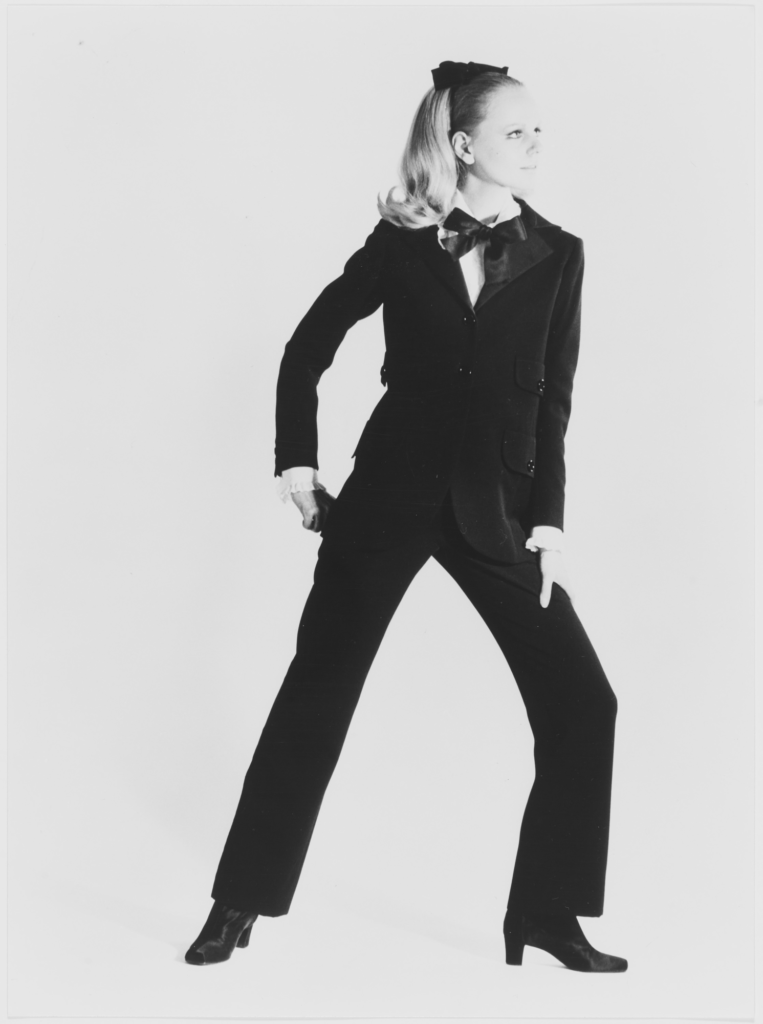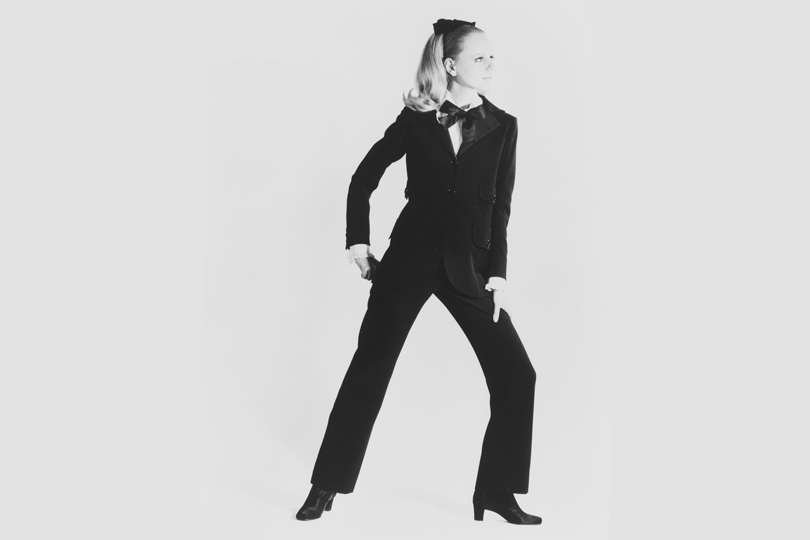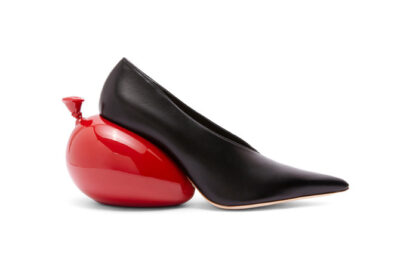Are you passionate about fashion and its history?
Among the fundamental things to know about fashion is the history of the iconic pieces that were introduced by famous fashion designers.
Whether you are a fashion student, an aspiring professional, or a simple fashion enthusiast, in this article, you will discover a thorough history of 7 iconic garments that revolutionized women’s and men’s fashion.
7 Iconic Fashion Pieces In The History Of Fashion
The Little Black Dress
The moment when the little black dress gained its first big momentum was when Coco Chanel introduced it in 1926. It was in the pages of Vogue. It was one of the couturière’s preferred dresses to create the “flapper look” in the 1920s.

Although she did not design the very first Little Black Dress, Coco Chanel was the one who made it widely popular, and desirable. Her design was revolutionary for many reasons.
The first reason is that before the 1920s, the black dress was reserved for mourning. However, Coco Chanel, followed by other designers later on, took the black dress out of this context. They transformed it into a versatile item that could be worn on multiple occasions.
Second, the design was practical yet elegant. It was fluid, straight-lined silhouette, which was opposed to constricted clothes that had dominated the previous period with tight corsets, bustle skirts, etc. Vogue called the LBD ‘Chanel’s Ford’, meaning it was simple and accessible to women of all classes. Coco Chanel confirmed:“Thanks to me, they [non-wealthy] can walk around like millionaires.”
Another reason for French couturière LBD’s success was timing. The dress was released in the Great Depression era when simple and affordable designs were key. It remained the perfect outfit choice during the Second World War. The dress caused severe rationing on textiles because it didn’t need an excessive amount of fabrics to be created.
Since Coco Chanel, the little black dress has been referred to as such. Also, it quickly became one of the most influential garments that inspired other designers to reimagine their own versions.
Burberry Trench Coat
When Thomas Burberry founded his eponymous label in 1856 out of a passion for the outdoors, and the willingness to protect the British from the rainy weather, the trench coat came as the perfect piece to fulfill this mission.
But before the actual trench coat that we know today, Thomas Burberry invented in 1879 the Gabardine – a raincoat that was breathable, lightweight, and waterproof. The item was revolutionizing and became in demand. Before its invention, waterproof coats were made of rubberized cotton fabric known as “Macintosh.” The coat was heavy and would cause the wearer to sweat. Thomas Burberry wanted to free people from wearing heavy and uncomfortable outerwear, so he offered a better alternative.
After the Gabardine, the Trench Coat saw the day in 1912. It was when Thomas Burberry was commissioned by the British royal family to create uniforms for the British army during the Boer Wars and First World War. The piece was designed initially as a military item for trench soldiers – hence the name: “trench coat”. The first model was the Tielocken, an entirely gabardine-made coat. The metal D-rings allowed one to attach military equipment and added extra chest protection and epaulets upon which an officer could display his rank, so the Trench Coat was considered a status symbol. Burberry also supplied the British Army during the Second World War.
After World War II, the Trench Coat stopped being an exclusively military piece. It soon became the sporty and stylish item par excellence, adopted by many as a symbol of comfort and practicality.
Chanel Tweed Jacket
The first Chanel tweed suit, which we also call “The Chanel tweed jacket” today, was created by Gabrielle ‘Coco’ Chanel in 1925. Just as with everything she designed, this item was born with the desire to liberate women from the conventional norms of dressing up and offer practical, yet feminine clothes. Indeed, the French designer sought to dress women “in suits that make them feel at ease, but that still emphasize femininity.”
In the mid-1920s, Coco Chanel was living in Scotland and dating the Duke of Westminster. Occasionally, Coco Chanel borrowed his clothes because they felt practical. This set the groundwork for working with tweed. What’s curious is that this fabric used to be reserved for menswear. However, it was so comfortable that Coco Chanel started using it in womenswear. She experimented with tweed and mixed it with silk and wool to create a lighter and more polished fabric.
However, it was not until 1954 that the tweed jacket was presented to the world for the first time.
It was on the occasion of the reopening of the headquarters of the Chanel House. The location was at 31 rue Cambon in Paris. The suits were straight and structured. It has a single seam down the center-back, and blurred the lines between masculine and feminine. Needless to say, they contrasted with Dior’s New Look with cinched waists. Hence, it was not obvious to promote the piece to French women, but Americans loved it. For instance, the former First Lady of the United States Jackie Kennedy wore it in 1963 on the day of the President’s death. Soon, the tweed jacket revolutionized women’s fashion and became an adored item adopted by the masses.
Since its introduction in 1925 and later again after the reopening of the House in the early 1950s, the Chanel jacket has not lost its popularity. When Karl Lagerfeld was appointed Head of the House in 1983, he solidified the Chanel jacket’s icon status. Over the years, he constantly reinterpreted the infamous piece by giving the classic tweed jacket a modern twist. Chanel created it from new materials: he made it in leather, lurex, sequins, feathers, denim, rubber, and even cement!
Saint Laurent’s Tuxedo

The invention of the tuxedo is attributed to Yves Saint Laurent, who introduced it in his Fall-Winter 1966 collection (one year after he launched his namesake brand).
Want to know a fun fact about the name? Originally, “Le Smoking” was meant to be worn in a smoking room to protect one’s clothing from the smell of cigars, and was originally reserved only for men.
Saint Laurent’s Le Smoking, however, was not an exact copy of the men’s tuxedo.
He used the same codes but adapted them to the female body, designing the first-ever suit for women. “A woman wearing a suit is anything but masculine,” said Saint Laurent. “A strict, clean cut accentuates her femininity, her seductiveness, her ambiguity.”
Although today the tuxedo is one of the most iconic and timeless pieces that can be found in the closet of almost every fashionista, it was not well received at first.
Since this type of garment was reserved for men, encouraging women to wear it was a bold choice too ahead of its time, and was heavily criticized by society. In fact, there was a French law in place forbidding women from wearing trousers in public, and even at a few luxury restaurants in the 60s, women wearing suits were refused service by employees and managers. This is why it was so hard to popularize a tuxedo for women, so much so that only one was sold, apparently.
However, everything changed in September 1966, when the designer opened his ready-to-wear boutique on Paris’ Left Bank and unveiled his more affordable Rive Gauche line, which included a lower-priced version of Le Smoking. It was an instant hit among young people. So it was like fashion weaponry of rebellion that questioned gender norms and became, in the words of the late founder himself, “the very symbol of the modern woman.”
“For a woman, the tuxedo is an indispensable garment in which she will always feel in style, for it is a stylish garment and not a fashionable garment. Fashions fade, style is eternal.”
Yves Saint Laurent
Yes, these famous lines you have probably heard many times were pronounced by Yves Saint Laurent in reference to this very tuxedo.
Le Smoking turned into a classic piece and was included in every collection until 2002 when Yves Saint Laurent staged his last runway and retired. But it never completely disappeared from the fashion world, and returned under the former creative director Hedi Slimane in 2012.
Diane Von Furstenberg’s Wrap Dress
“It’s for a woman who is the woman she wants to be”.
Diane von Furstenberg
The wrap dress is the main piece associated with the name Diane von Furstenberg. Although technically she did not invent it (Elsa Schiaparelli made it in the 1930s,) she is the one who made the wrap dress a staple in women’s closets. It is a true symbol of feminity and elegance.
It all started when Diane von Furstenberg arrived in New York in 1970. She had a suitcase full of jersey dresses that she had made at her friend Angelo Ferretti’s factory in Italy. Encouraged by former Vogue editor Diana Vreeland, Diane von Furstenberg created the first wrap dress in 1974 . This was 2 years after launching her eponymous label.
She initially designed a cotton jersey shirt dress and a wrap dress similar to the one ballerinas wore. She then had the idea to mix these two pieces into one single garment – a dress that wraps around the chest.
The wrap dress was an instant sell-out. It was an international success and put Diane von Furstenberg’s name on the fashion map. The wrap silhouette became a sensation because it suited women of all ages and body types and all lifestyles. They felt sexy and empowered in this dress. Women could wear for any occasion – from work to daily errands to parties. Besides the flattering silhouette, it’s also the jersey fabric that attracted the ladies. The fabric was comfortable, wouldn’t wrinkle, and made the dress look casual yet elevated.
Actress Cybill Shepherd wore the DVF wrap dress in “Taxi Driver” in 1976 and the piece became a cult in the 70s. By the end of the 1970’s, Diane had sold well over a million of them!
Since its launch, the wrap dress has been reinvented in countless sizes, colors, and patterns.
Calvin Klein Jeans
Did you know that Calvin Klein is the first-ever designer to show jeans on the runway?
When the American fashion designer launched his label in 1968, his first collections included coats, dresses, sportswear, blazers, lingerie, and accessories. But when he added jeans to his product assortment in 1976, his label found an even bigger success!
In 1978, the brand launched Calvin Klein Jeans. The commercial success was inevitable. Already during the first week on the market, the brand sold 200,000 pairs of jeans!
Then in 1980, a 15-year-old Brooke Shields posed for a Calvin Klein Jeans ad campaign, shot by the famed fashion photographer Richard Avedon. Her quote “You wanna know what comes between me and my Calvins? Nothing.” is memorable.
Although the campaign skyrocketed the Calvins’ popularity to new heights, it was also shocking and disturbing for many people at the time because it was perceived as too sensual.
However, Calvin Klein always remained true to his philosophy and kept making things his way. “Jeans are sex. The tighter they are, the better they sell,” he once said. It was an innovative and necessary move to break the industry’s standards and push fashion forward.
The Polo Shirt
The Polo shirt is most associated with Lacoste and Ralph Lauren. Although they weren’t the first to invent this garment, (it was discovered by the British military on Indian local polo players in the 19th century, and Brook Brothers company) they are the ones who made it iconic.
Around 1933, René Lacoste, then a professional tennis player, was approached by the owner of a leading French knitwear manufacturer, André Gillier, who proposed that the two come together to sell reproductions of Lacoste’s knitted tennis shirt, featuring his famous crocodile logo. That same year, they founded “La Chemise Lacoste”, now known simply as Lacoste. It became the first brand to feature a visible logo on the outside of a garment.
The creators began mass-marketing his shirts as tennis uniforms. The new short-sleeved polo shirt in “petit piqué” cotton polo revolutionized the outfits worn on the tennis courts. It was more flexible, lightweight, and breathable, and provided more freedom of movement compared to regular tennis shirts. In 1951, American manufacturer Izod gained a licensing agreement to produce and sell Lacoste shirts in the United States. They quickly became a must-have piece not just in sports, but to wear on different occasions.
Four decades later, in 1972, Ralph Lauren introduced his version of the Polo shirt. It was crafted from the purest cotton fabric that was light and comfortable. The Ralph Lauren polo became one of the most fundamental pieces of menswear. It was a timeless and versatile piece of everyday wear, and a signature item of the preppy, Ivy League look. Today, it is available in more than 50 shades – not including the limited editions and a polo customization service.
Want to learn more about fashion industry fundamentals? Subscribe to our daily newsletter 365 days of fashion.






